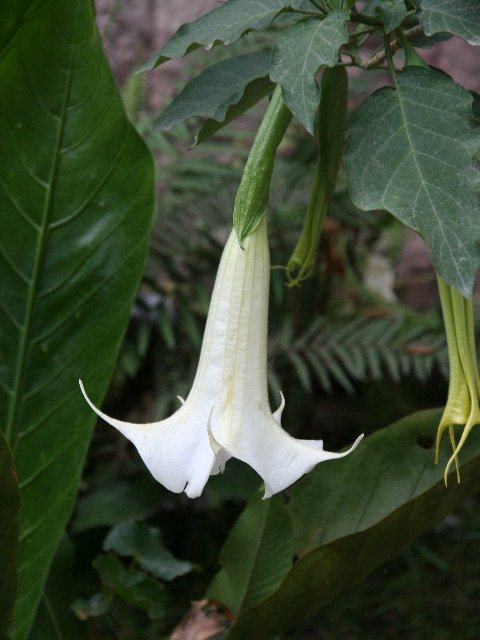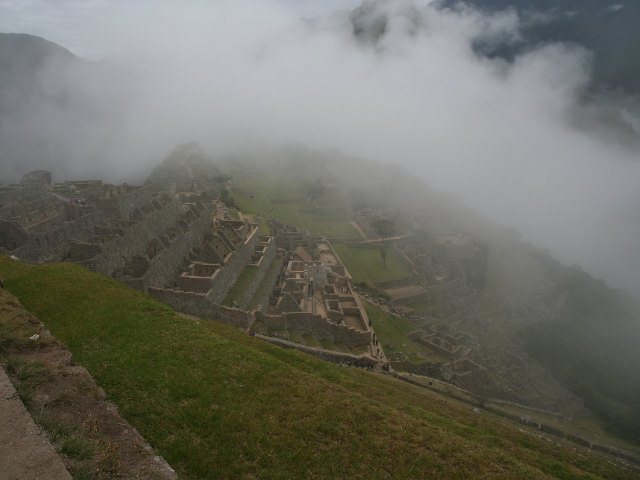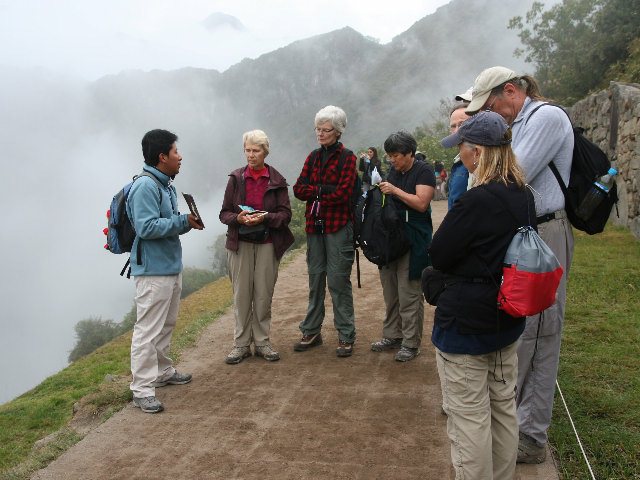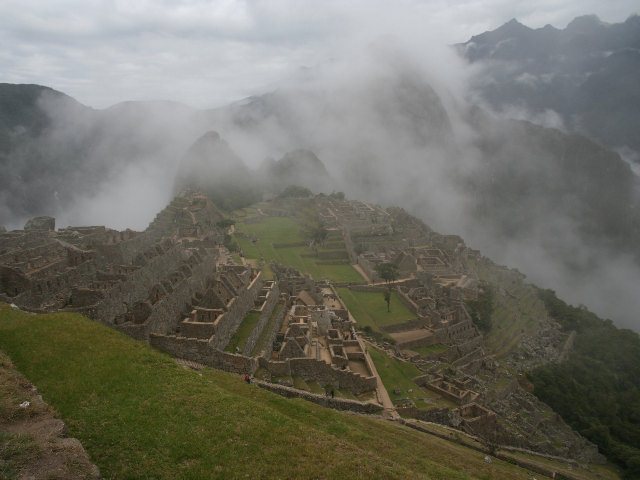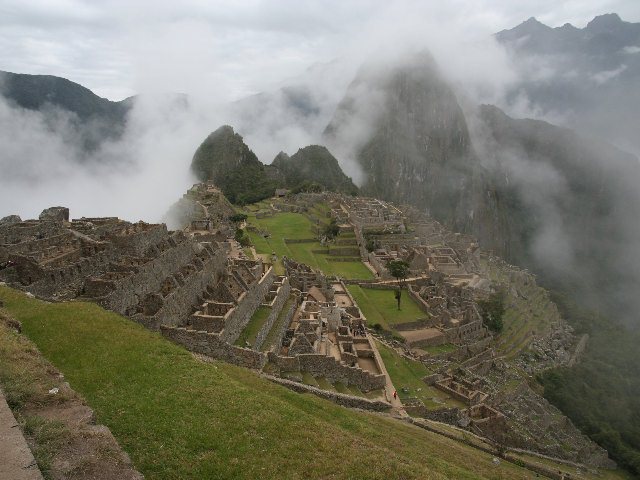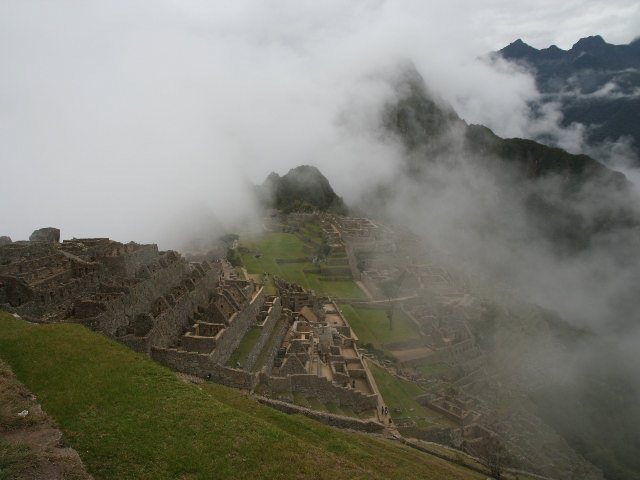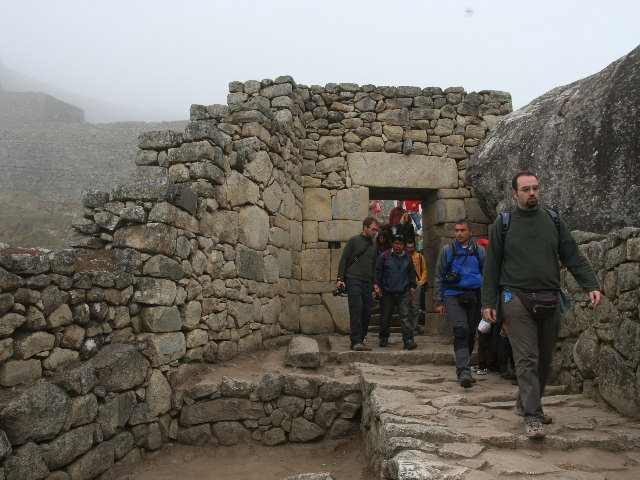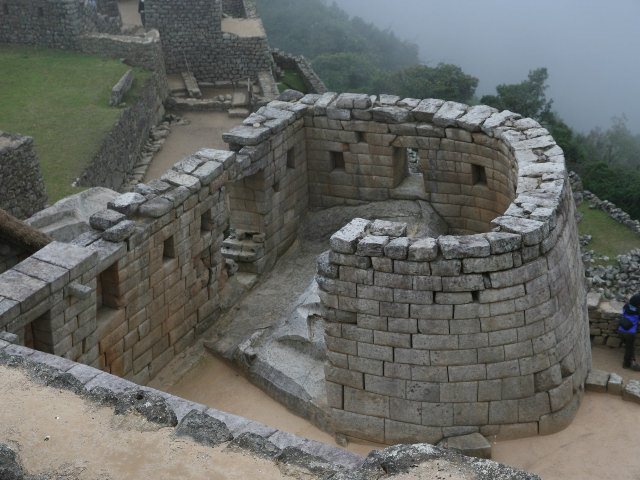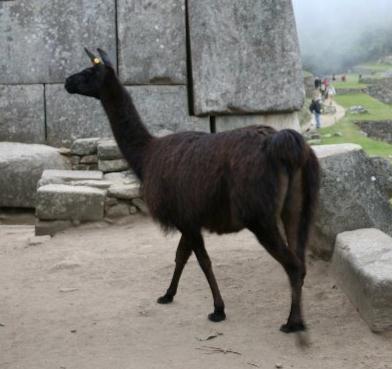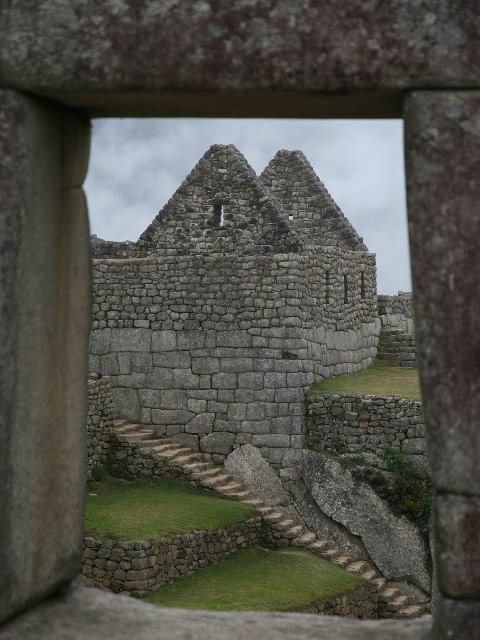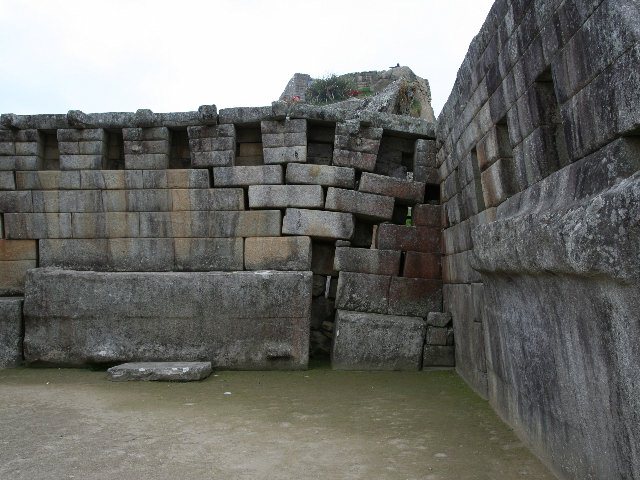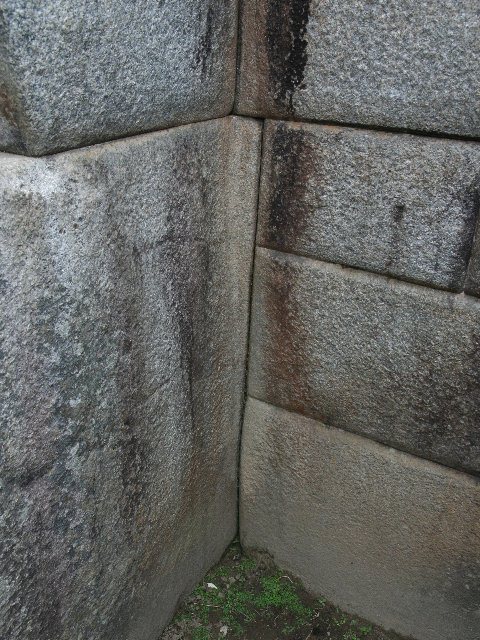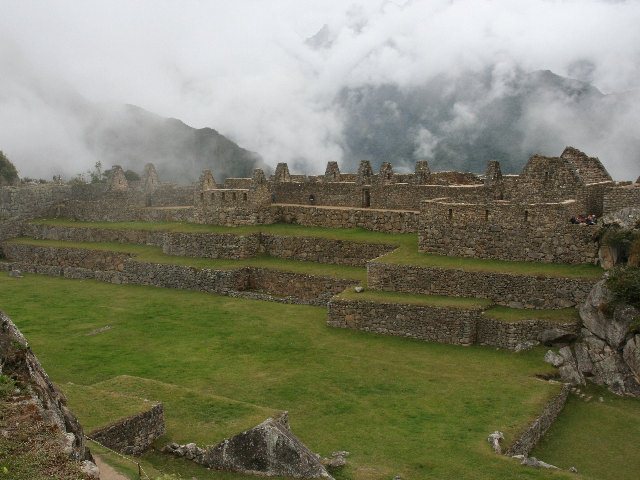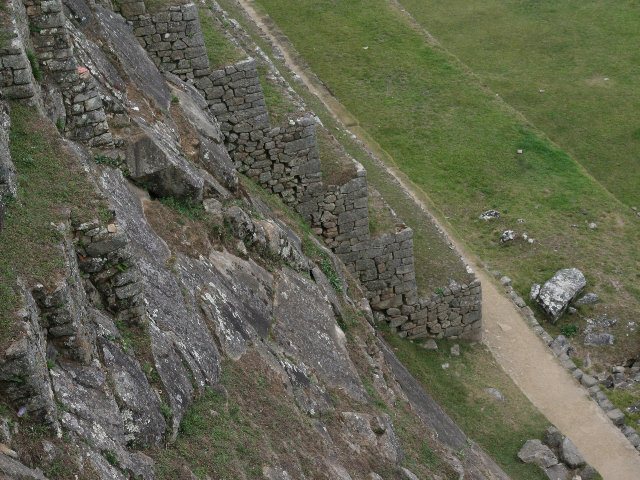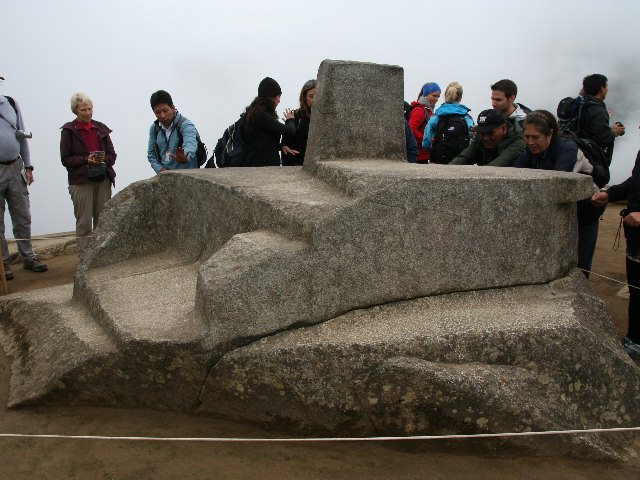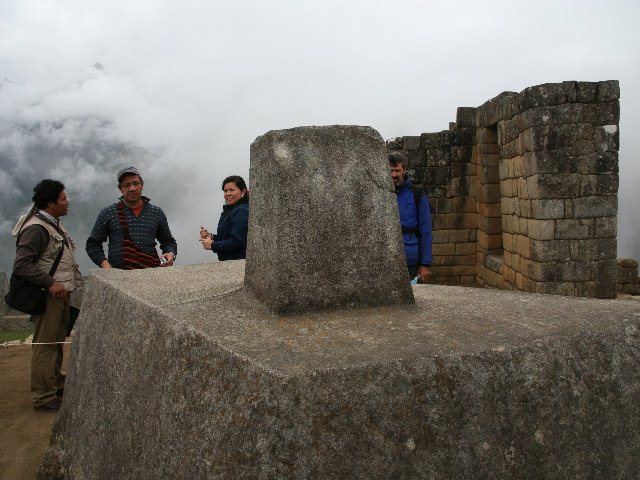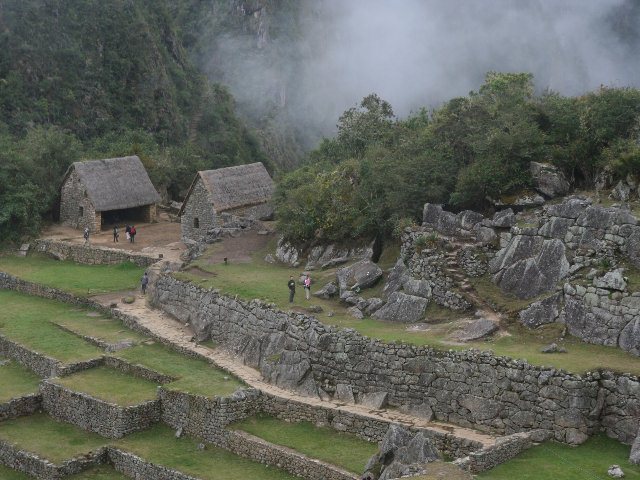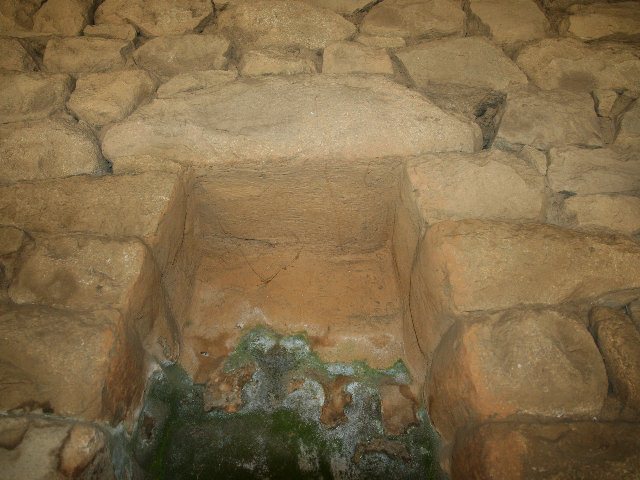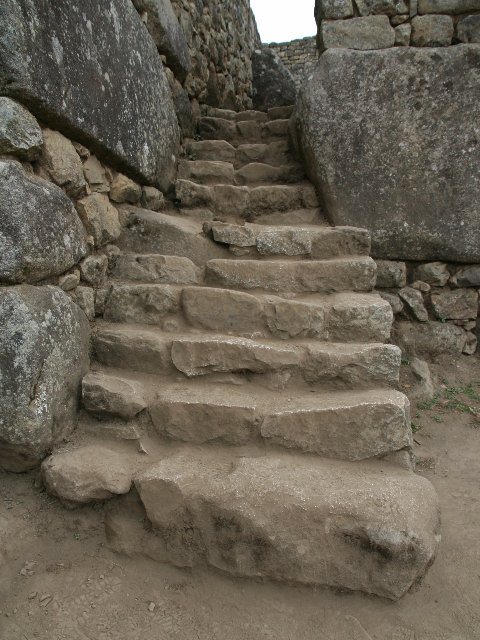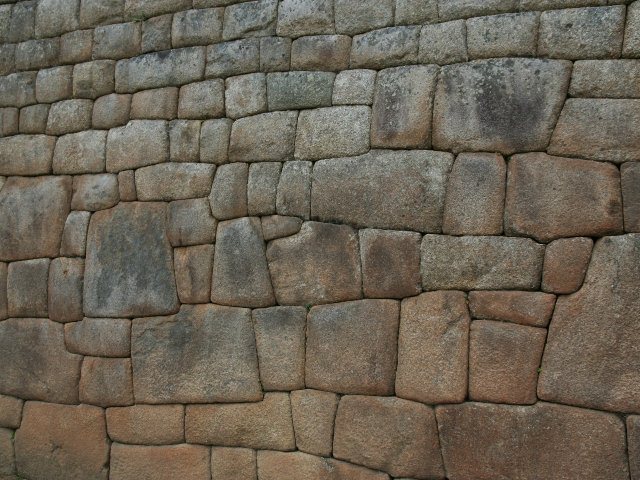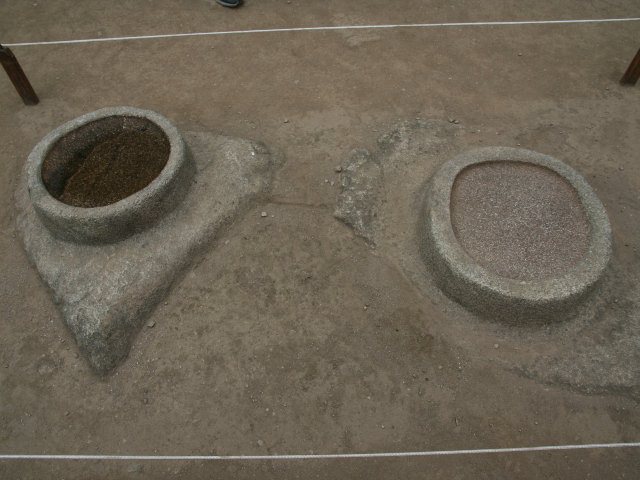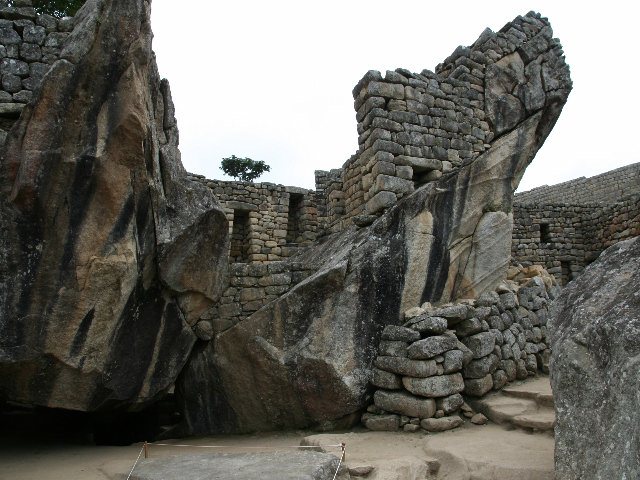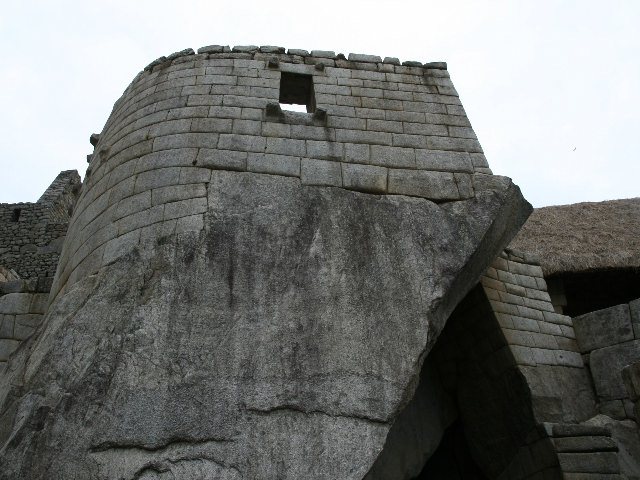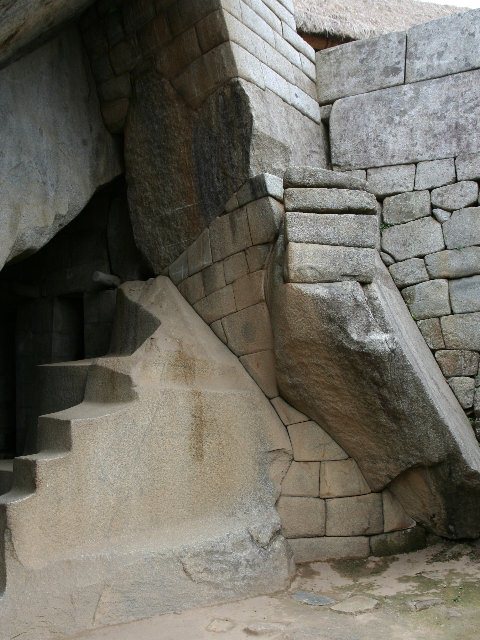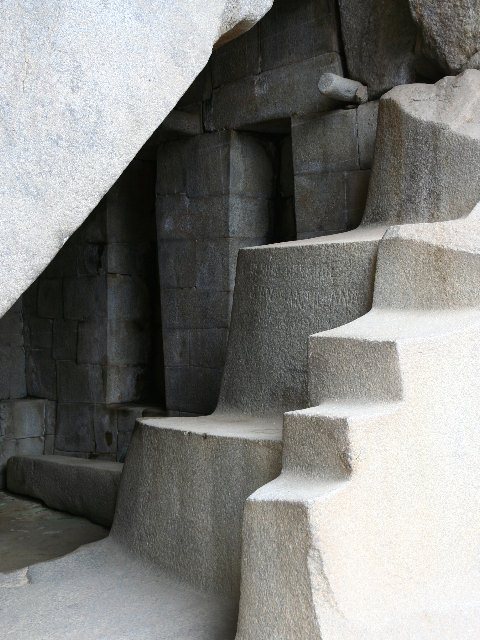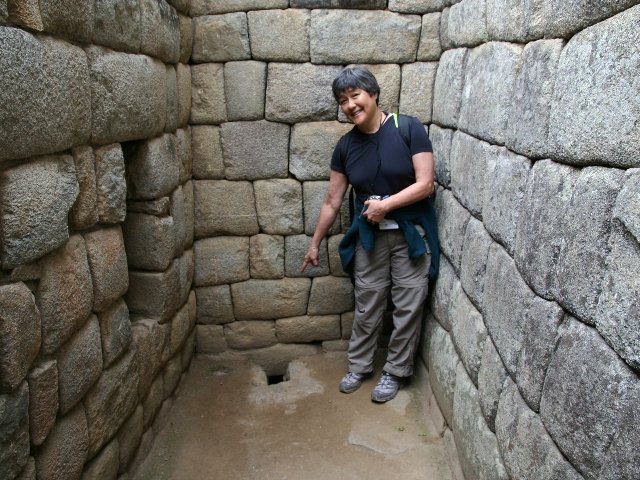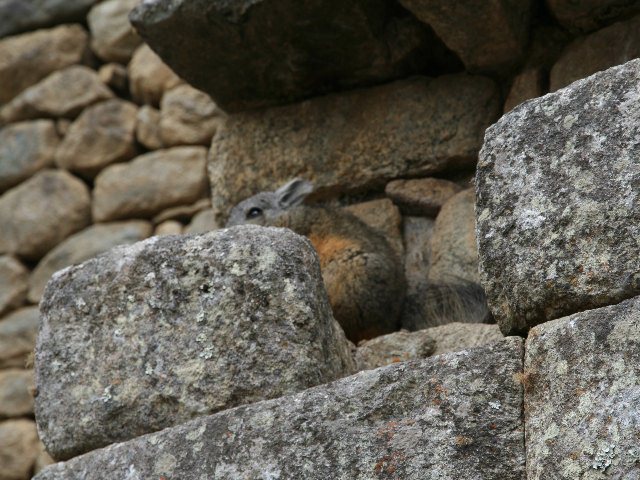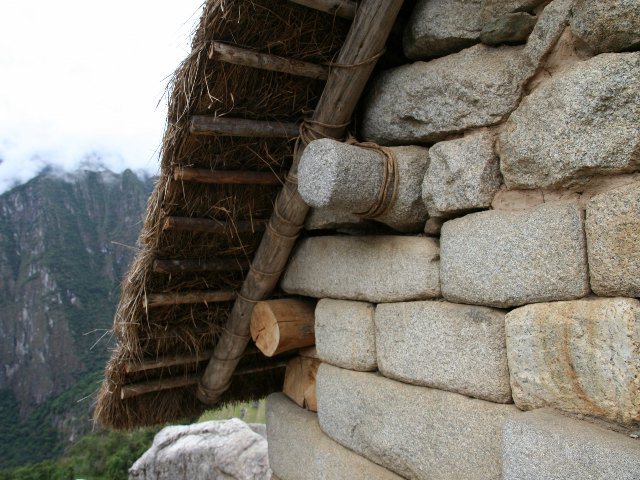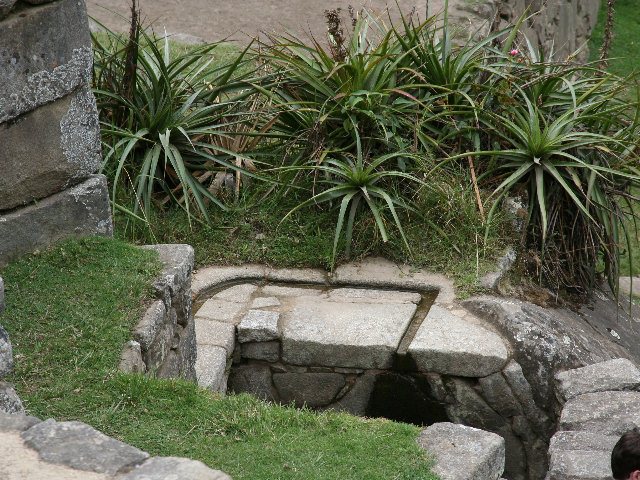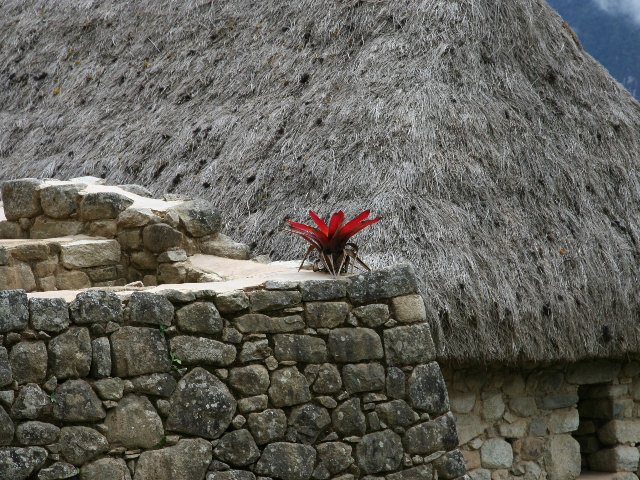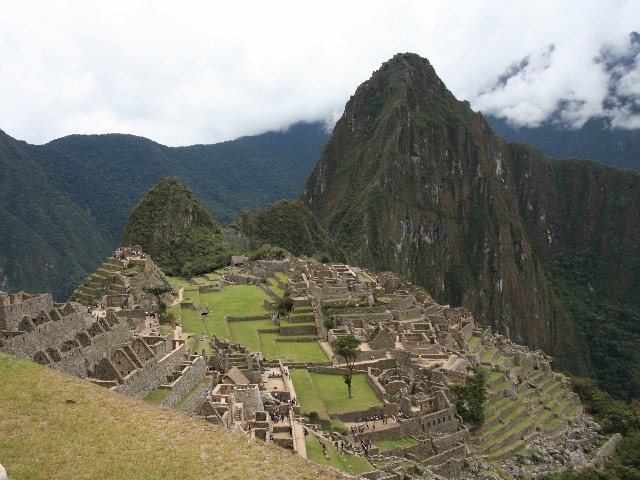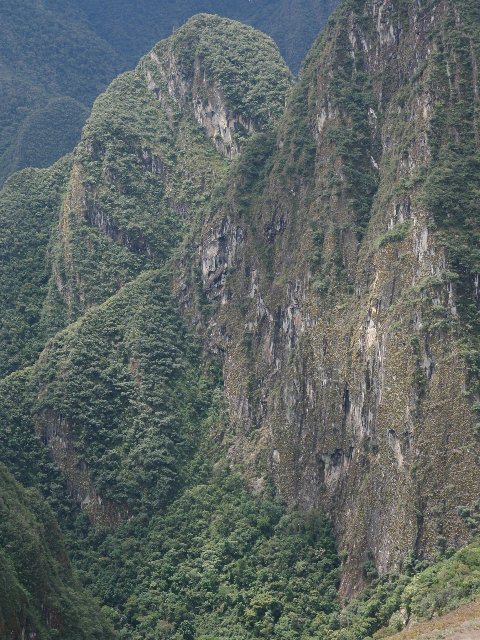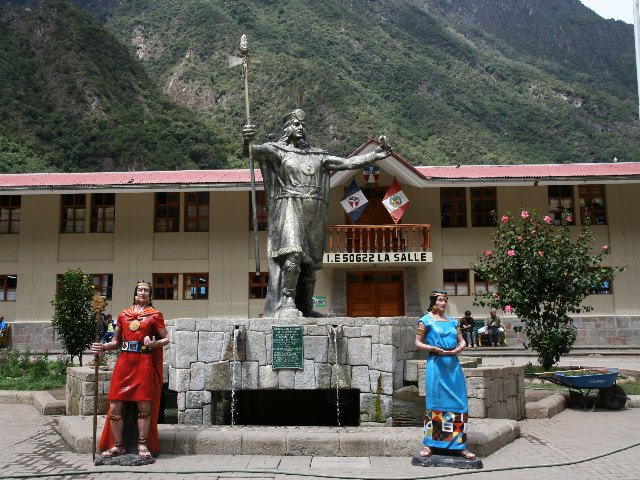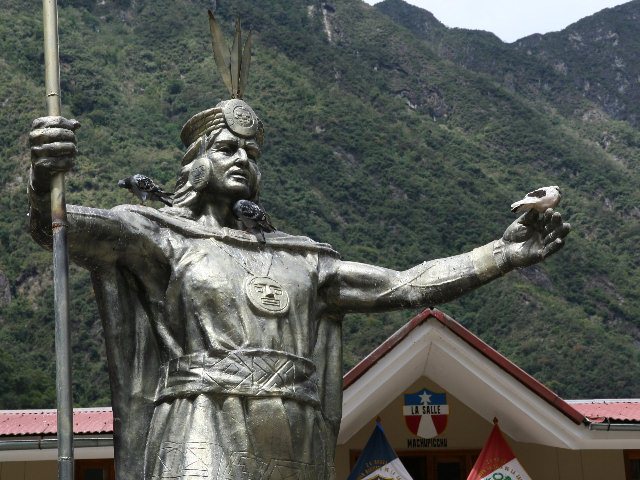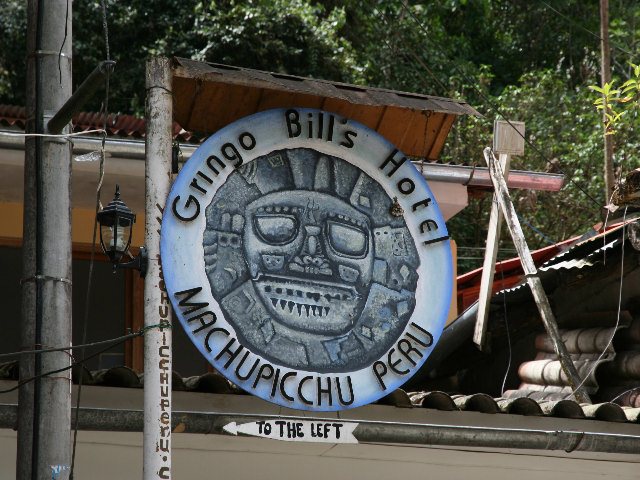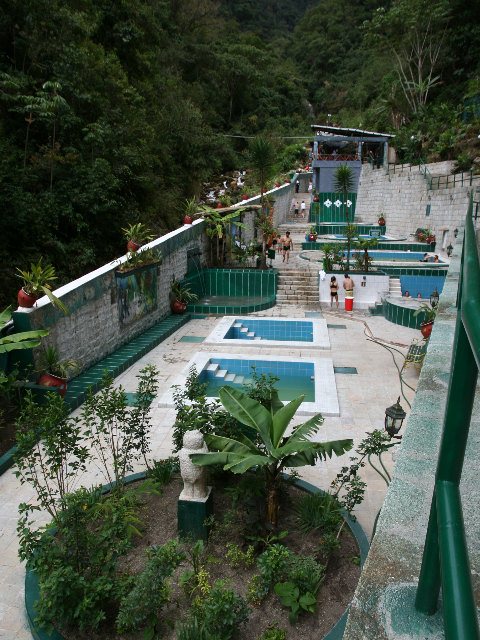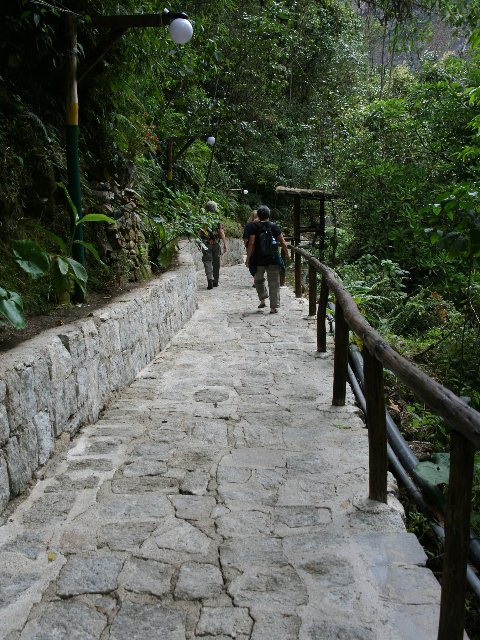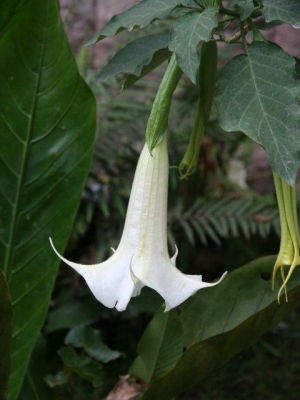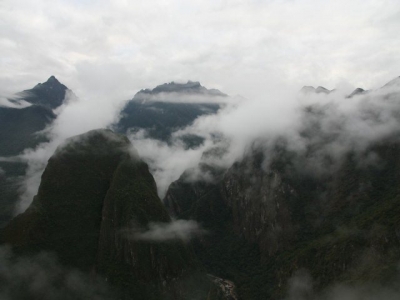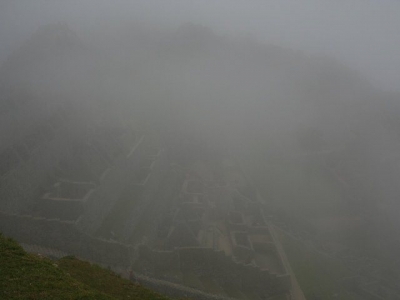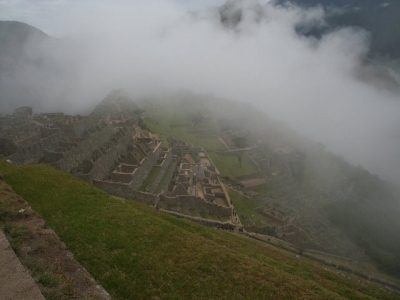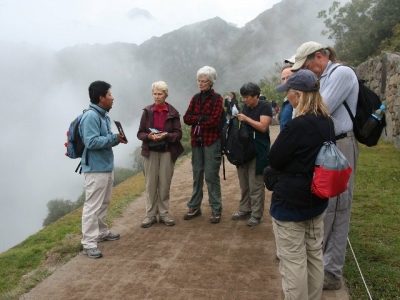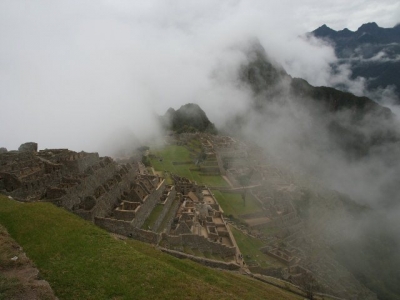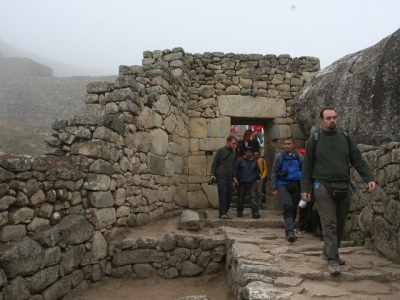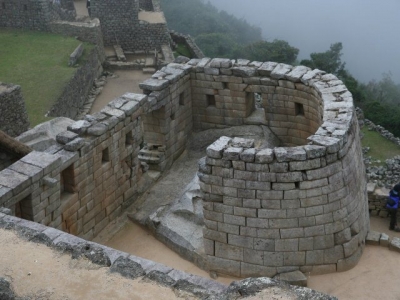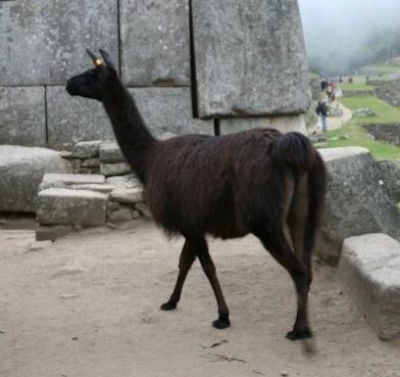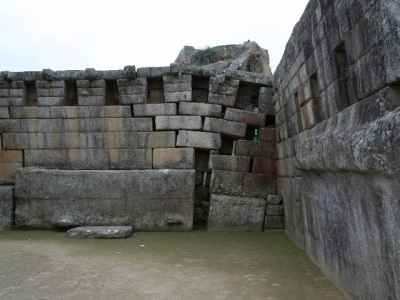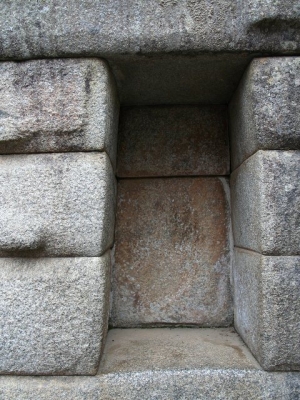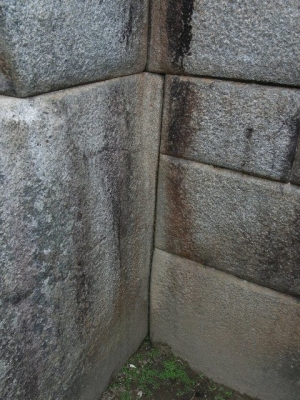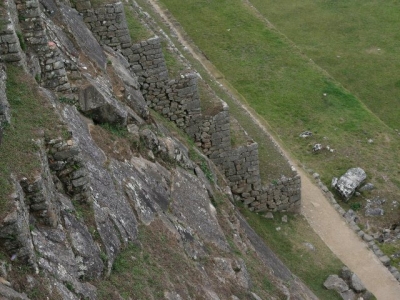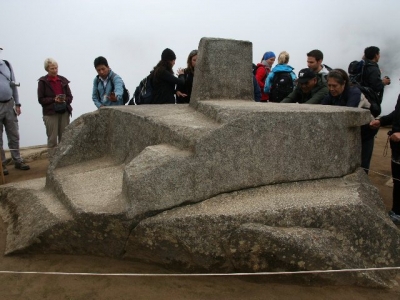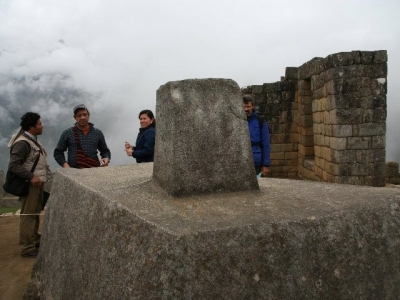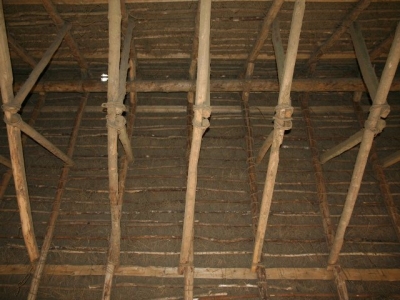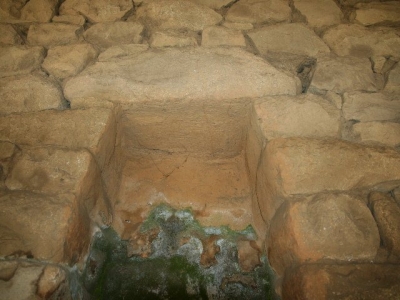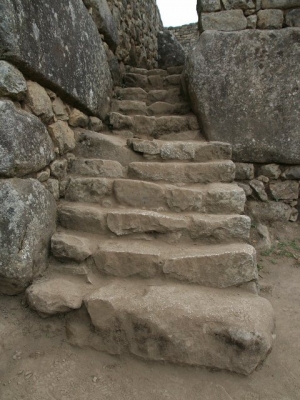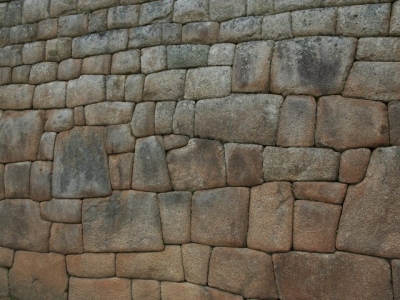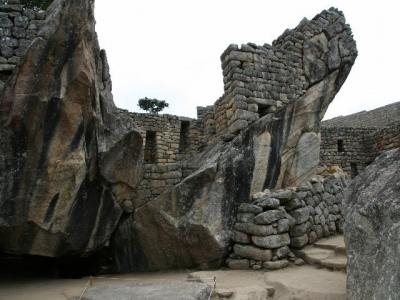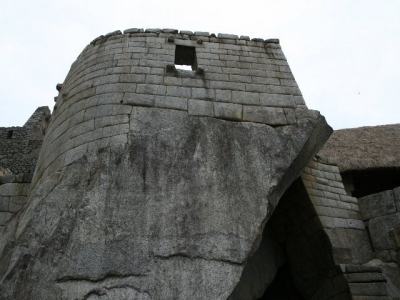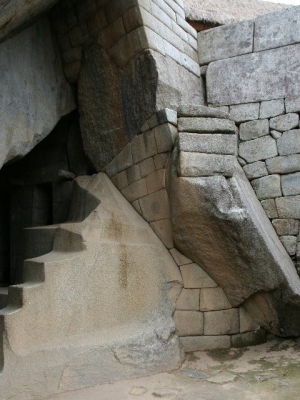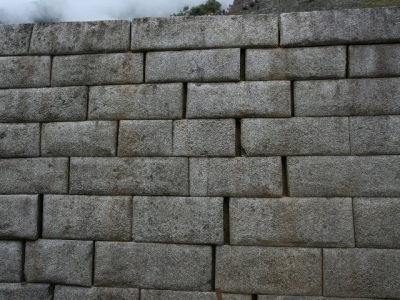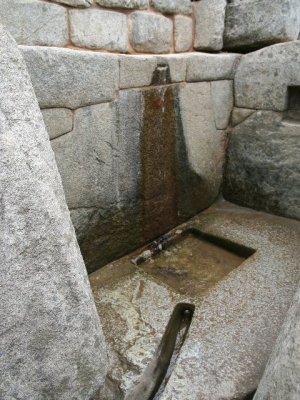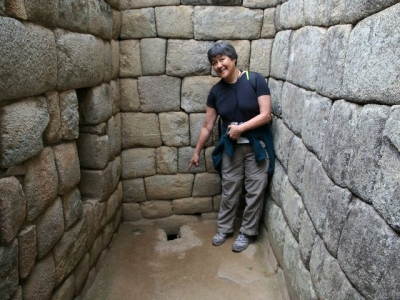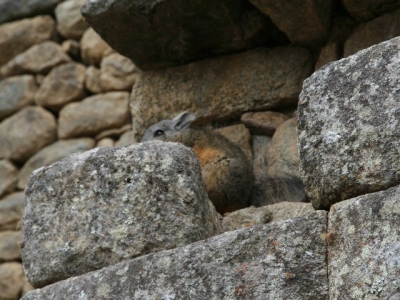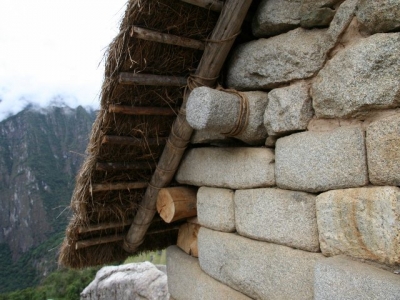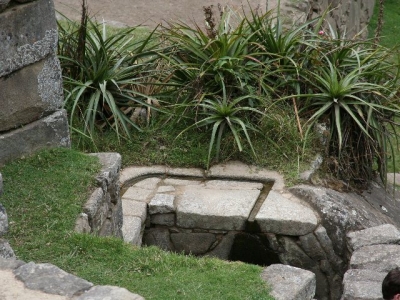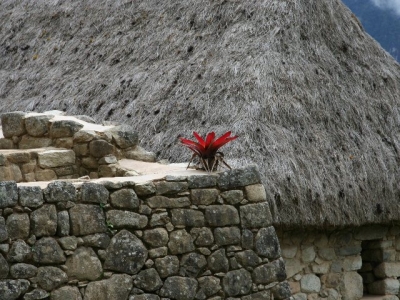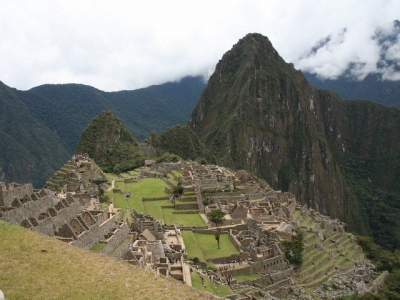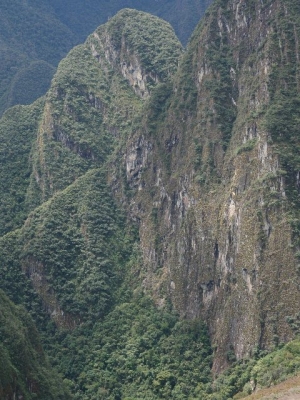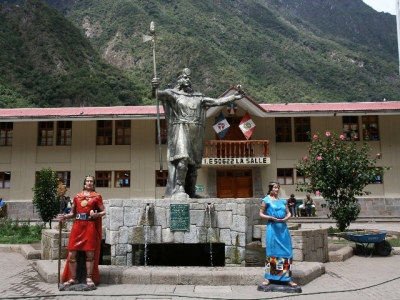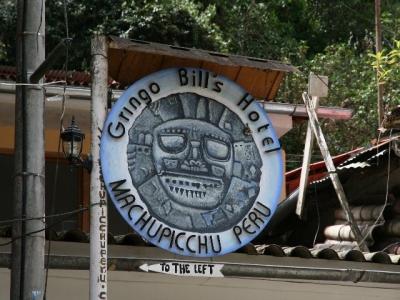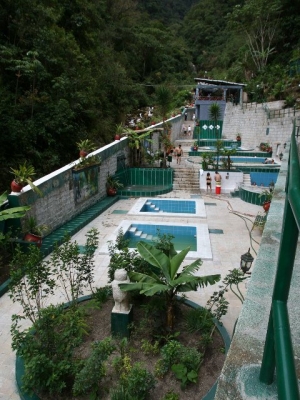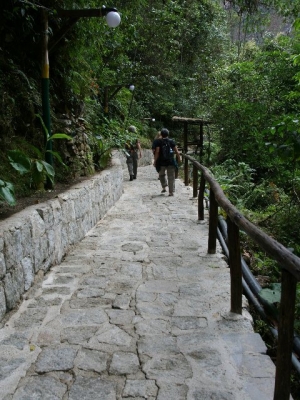Day 10: In the Machu Picchu Ruins
Today we met at 5:20 AM to head for the place where the buses depart for the main entrance to Machu Picchu. Steve’s last experience here was that most people came up later and that only 20-30 people were waiting around to catch the first bus. Well, times have changed! There was a line running for over a block. The operation is very efficient, though. The ticket-takers count how many people can fit on each bus, then they start loading the next one. The buses departed as soon as they were full.
At the top, predictably, the story was the same. Lots of people in line to get in. As you have to show your ticket and your passport, it’s not as simple as just showing the ticket and getting in. They verify that the numbers match, and they assiduously count every person who enters.
There’s a lodge just outside the gate, but apparently the rooms are over $1,000/night, so I won’t be experience that hospitality, but there were some beautiful trumpet vines outside the front entrance that I got a picture of as we moved in line.
We were early enough to catch the mists that settle in the mountains. Looking down on them made me truly feel I was close to the top of the mountains.
The picture that looks totally clouded over was our first view of the main Machu Picchu ruins. We had a great guide today, Marco. He was knowledgeable, attentive, patient, and spoke very understandable English. We got a thorough introduction to the basics of the site. Every once in a while I’d turn around and get a picture as the mists moved in and out. Just when it looked like everything was going to clear up, more mists moved in. Pretty cool to think about how this was a fact of life for the people who lived here.
The picture with people coming through a gate shows the main gate into the city. It was very protected to keep out mainly destructive animals, but also human enemies. There is evidence of structures in the wall to which a gate could be attached, but it’s not certain exactly how the door attached or was opened.
We visited a unique structure with a curved wall. This was apparently a temple of some sort. Directly underneath it is a tomb for the important Inka. Marco told us that in their time, only the king was referred to as the Inka. Common folk had another name.
As we were walking to our next stop, a llama happened by. The completely dark llama were considered to be the most sacred and were the only ones used in sacrifices. The first part of that would be great, but not the second part!
I got a great picture through a window that I had to be very patient for. There are soooooo many people at the site that you virtually cannot get a picture that doesn’t have someone, or many someones, in it. Marco said that there is a move afoot to limit the number of people who can visit the site daily. Right now it’s supposedly set to 4,000. A few years ago they tried to cap it at 2,500, but there was so much fuss, they did away with that limit.
The reason they’re wanting to limit the number of people is that the site is actually falling apart. The picture that shows stones at the right side slipping down and apart is a good illustration of this. The bottom stones are actually sinking and the wall stones are separating in response. It’s not clear yet exactly why the sinking is happening (perhaps underground caves?), but more and more people walking around certainly don’t help.
Another thing contributing to the slippage is that the construction used for these walls was not interlocked as you’d see at other sites. The stones were simply placed one on top of another, so there is no anchoring.
We went into one room that had interesting niches. Marco showed us how acoustic they were. We put our heads in and hummed, and the sound was magnified. That was cool. This same structure also demonstrated how the builders put the site together. They used standing stones that they added to and modified to form the shape they wanted. You can see in the corner section how the standing stone actually wraps around the corner, then other stones were added at appropriate places to form the walls.
I got a nice, misty, picture of the main plaza. You’ll notice, though, that there aren’t any people walking around on that. No people are allowed there, which is great as it helps minimize damage.
As we walked up to the temple, I looked over the edge and saw a really sheer drop-off. I’m not sure how much of that will come across in the picture, but it was quite a site in person.
At the top of the Intiwatana–a high point in the ruins–we saw a huge stone, the purpose of which is not entirely clear. Since its top jutting structure aligns with the equinoxes, it probably had something to do with the sun worship. In other sites, a structure like this was called something like a “hitching post” because at the solstices, the sun hit it just right and it was a way to “catch” the sun.
We next moved to some structures that had had the roofs reconstructed. The inside picture up to the roof shows how they speculate the roof was supported.
Another interesting thing we learned was that except for the higher-types of stone construction where the stones were even and all fitted together well, the “rustic” type of walls were covered with a plaster-type coating. The picture shows not the original but a reconstruction by the archaeologists to show what it probably looked like.
I got a good shot of a typical staircase. Let me tell you, after climbing up and down tens (perhaps hundreds!) of these things, facing another one is pretty daunting. Many of the steps are uneven so you always have to watch your feet. Going down is an exercise in balance, going up an exercise in endurance. I’m grateful I did the exercise work I did before I came, but I don’t think it was nearly enough! (Yes, we did climb this particular staircase. I just waited until the rest of the group was out of sight and then boogied up.)
The stone wall is an example of the middle-type of stone construction, where stones are not a consistent size but they are fitted into place really well.
The round structures are interesting. The one on the left is a “mirror” that catches the sun as it comes through the window above it. The one on the right is its companion, because the Inka believed in the completeness of pairs.
The picture with the irregular wall jutting up to the right is a representation of a condor. The niches in the walls were where mummies were placed. The flat stone at the bottom is where guinea pigs were slaughtered as food for condors. The belief was that the condor took the spirit of the dead to the spirit world. This is an interesting structure, with caves underneath were sacrifices were left.
Then we were back to that roundish structure from the beginning, but looking up this way you can see the big stone it was built on. Underneath is the cave where the royal mummies were left in niches. You can tell the place was important because of the stone work (see the hourglass shape?) that formed the walls.
It’s probably not too apparent, but this is the place where some actual graffiti was left by some early visitors to the site, before Hiram Bingham found the place. They carved names into the middle level of the upright stone.
Next is another example of stone slippage in another area, then a shot of one of the water fountains at the royal residence. This was the highest so it got the best water. And the royal residence is the only one that has a “bathroom.” Now it just appears as a hole in the floor (which Linda is helpfully pointing to). Who knows what it looked like when it was used. Can you imagine the effort it took to put these heavy stones into place in the walls just to create a private place for the toilet? Wow.
At our next stop, I looked up and found a little animal, kind of like a rabbit. They roam all over, but I think this one just got into a place he couldn’t get out of because of the crowds of people. He was being very, very still in order to hide himself. Of course, no one bothered him, but lots of cameras were very busy capturing him virtually!
A few of the huts have had roofs reconstructed. Remember the earlier picture of the inside structure of the roof? The next picture shows how it might have been attached to the stone juttings that are part of many of the buildings.
I’ve been very impressed with the water courses. The picture with the greenery on top and the round to square corner channel shows one way they directed water where they wanted it to go. then I caught a pretty red plant on the corner of a building. With so much being gray in this place, the red really stood out.
By the way, perhaps this is a good place to mention that Marco told us that 80% of the site is original and 20% is not. The 20% consists of the walkways and the tops of the walls. They’ve mortared the tops of the walls to keep water from getting in an eroding them even more.
The tour was essentially over at this point. We took a break for some lunch. Linda and I had been planning to catch the bus down, but when the sun started to break through, I decided to stay for a while and see if I could get a sunny picture. Linda kept me company, and we headed back up to the initial vista to sit and wait for what might come.
One of the things that came was the opportunity to take pictures of people with this site in the background. that was funny, but people seemed pleased with the results, so that made me happy.
I did get a sunny picture so you’ll see it here. I also got a good picture of one of the surrounding mountains. This shows very clearly that if you didn’t come in on a constructed trail, it would be next to impossible to get into the city by any other route. It’s sheer!
Once back in the town, I got a few pictures of the statue that dominates the square. I believe this is the most famous king, Putucusi, with his attendants. I thought it was funny that he’s now also a resting place for the doves that are there.
You’ll see a cool sign for our hotel that’s on the square, too.
Later in the afternoon, Linda, Pam, Gwenn, and I walked to the hot springs that gave the town its name of Agua Caliente. The lady at the booth let us walk up to see the place and it looked very nice. I asked a couple coming back from there how it was and they said good. The different pools are different temperatures. A couple of us were going to come back but we just ran out of time.
On the way back to the hotel, I got a bite to eat because I was hungry and didn’t want to go out to dinner. The ladies kept me company. Once we got back to the hotel, I did some washing of both some clothes and me. It felt so good to take a hot shower!
Tomorrow morning we head back up to Machu Picchu for the morning and catch a 3:00 PM train that will take us part of the way back to Cusco. We’ll stay overnight and visit some ruins there.
So stay tuned for more!
